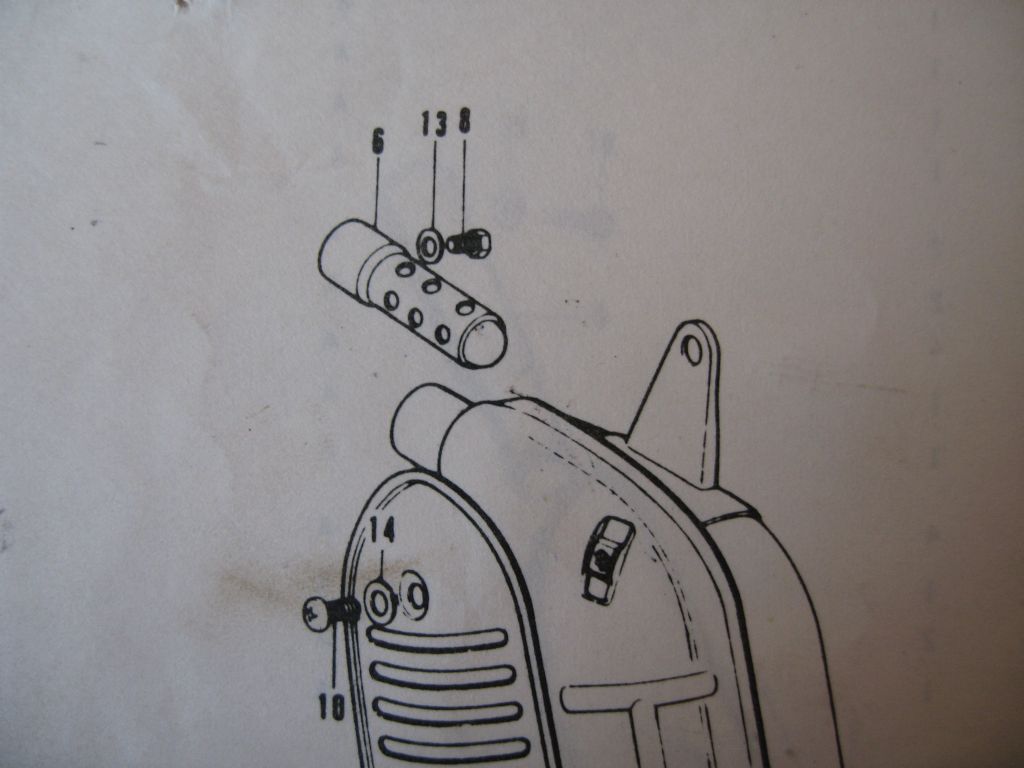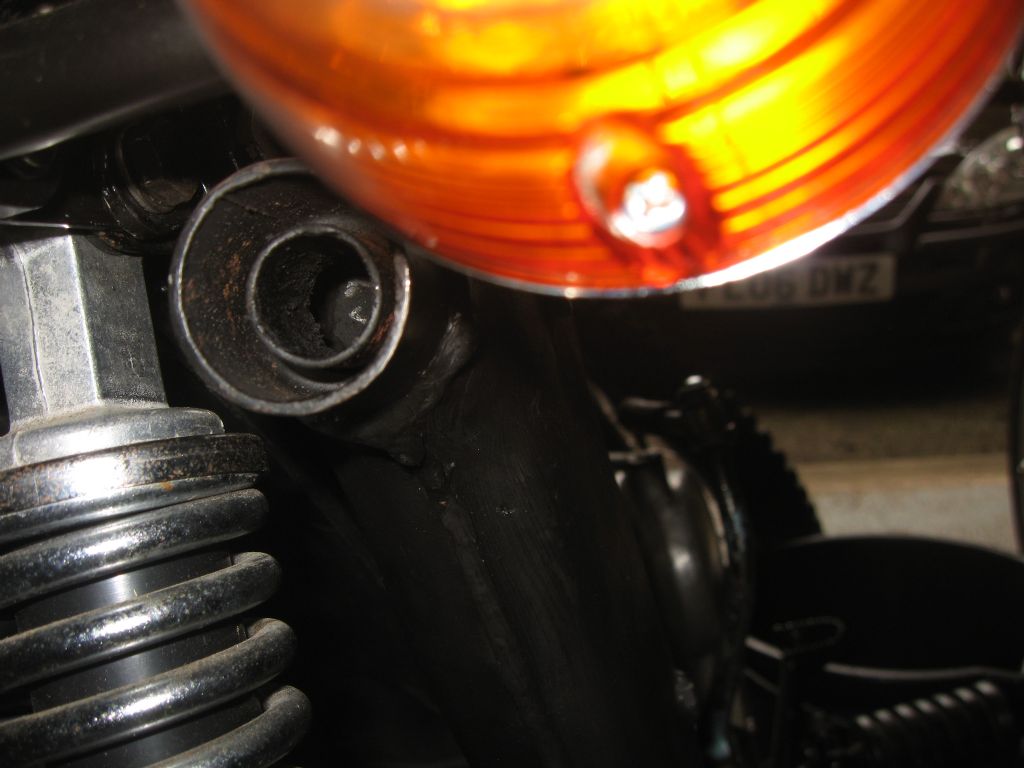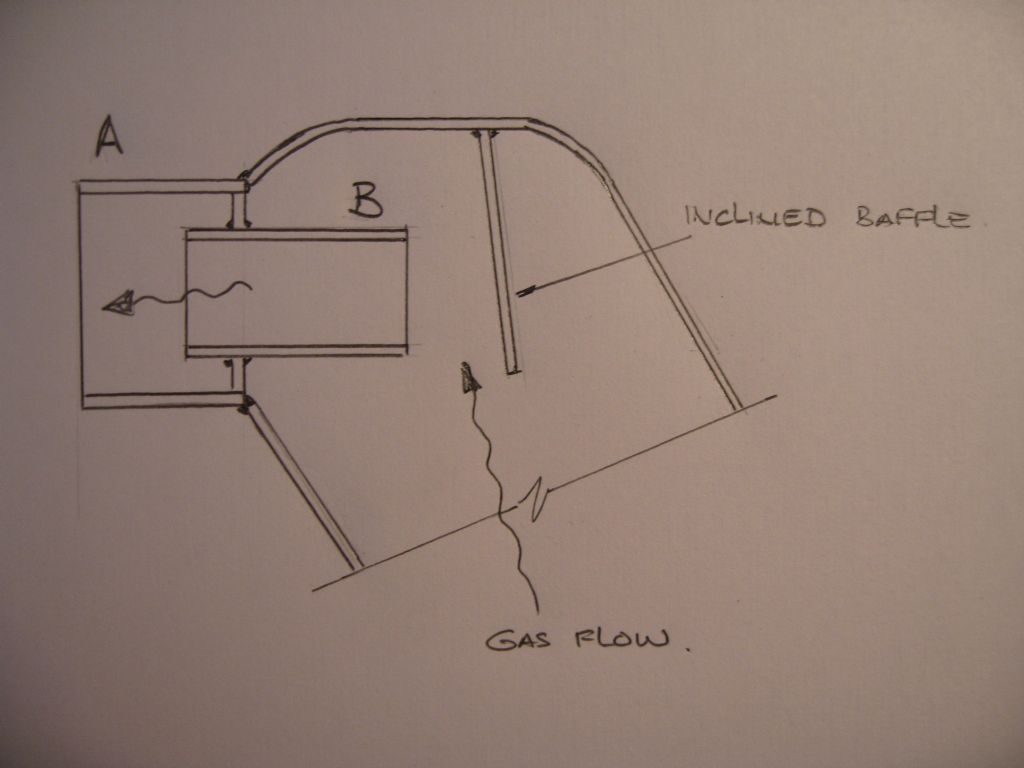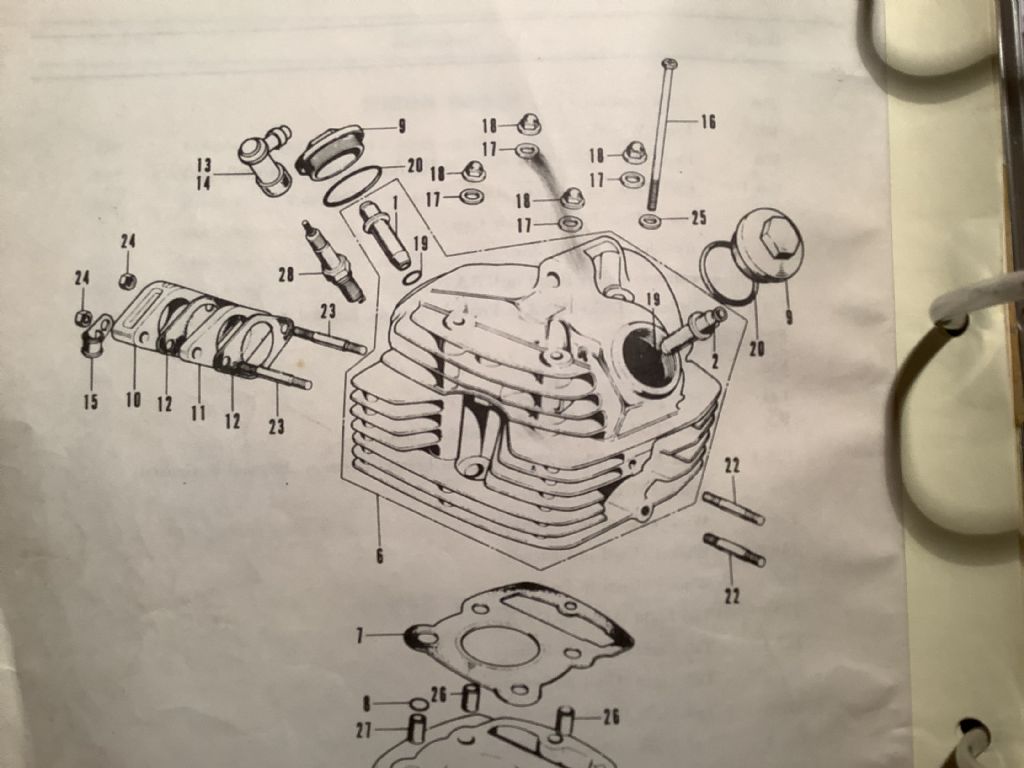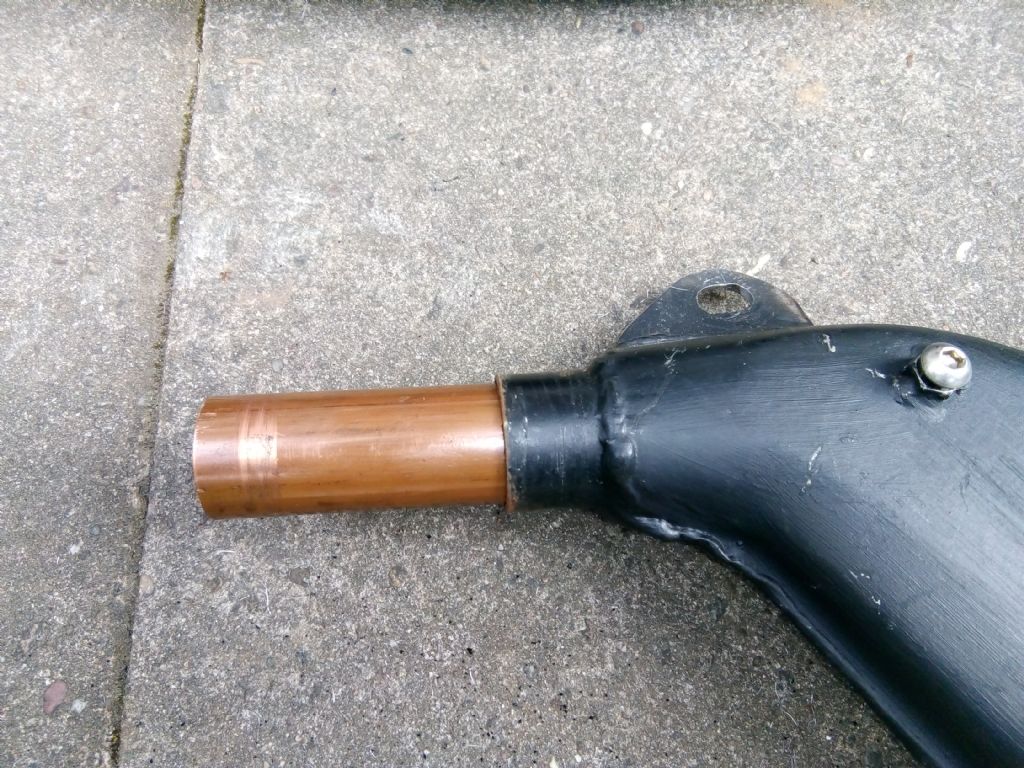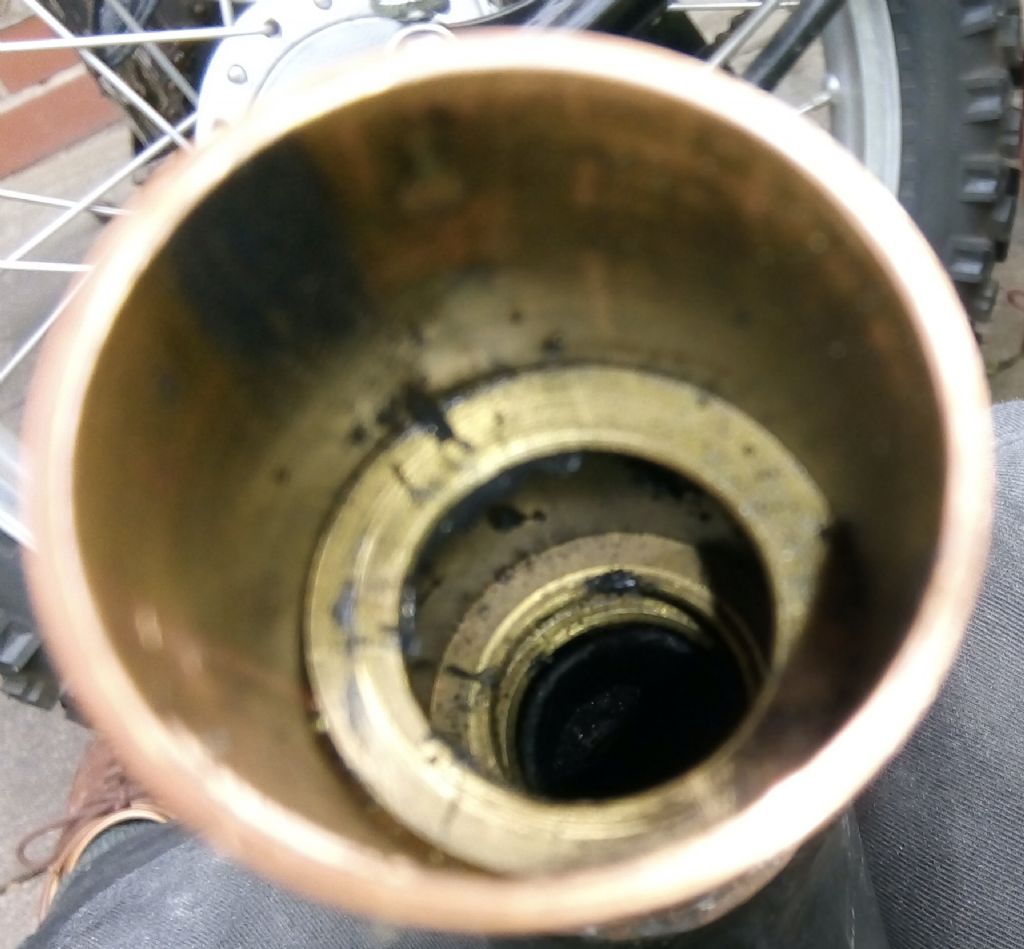That diffuser is basically a simple annular discharge outlet functionally equivalent to a slot outlet fishtail but significantly less effective because the flow path length is the same all round. Properly made fishtails are better because the path length varies depending on where the gas actually comes out of the fishtail and expands into the atmosphere. Considerable potential for destructive interference reducing sound levels. If you are lucky there may even be a bit of pipework in that diffuser giving some sort of reverse flow effects.
Messing about with different styles of diffuser / absorber bungs is likely to be interesting, frustrating and inconclusive in fairly equal measure.
One things for sure as an aftermarket unit the internals were never designed in any real sense of the word. Usual philosophy seems to be "Just stuff something it that looks like it might work." It is, after all quite hard to make a completely ineffective silencer / muffler. Especially when market demand is for something a bit more rorty than standard.
The aftermarket one on my BSA DB32 Gold Star had a single lonely baffle about 2/3 rds of the way along yet was silly quiet up to around 3,500 or so RPM. Above that standard "Who started World War 3" service was resumed. I felt the characteristics well suited to my youthful use. After all successfully creeping in at silly early hours in the morning to be followed by bleary eyed breakfast time maternal interrogation "And what time did you get in last night? I didn't hear anything." not being a standard Goldie specification requirement.
If you really want something effective its probably best to bite the bullet and accept that the back will have to be cut off and proper innards inserted. After experimentation with a relatively crude but near enough the same shape to fit mock up.
For innards consider a pair of hockey stick or "J" shaped pipes with closed ends, one on the inlet and one on the outlet set back to back and overlapping for most of the length of the silencer. Drill holes in opposite sides of the pipes so the gas can get from one to the other. Holes at top end of inlet and bottom end of outlet to give some element of reverse flow and expansion. Maybe add a longitudinal wall between the pair to make the flow behave better and another transverse one at the top end of the inlet pipe to properly close things off.
A second wall at the top would let you further drill the output pipe and stuff in some wadding to make a short absorption silencer which would take out some high frequency sound removing the hard edge to the exhaust note. That would be similar in principle the the short absorption silencer accessory BSA sold to shove up the tailpipe of a Goldie fitted with the proper, baffle-less, "megaphone" silencer properly intended for racing use. Surprisingly effective at rendering the exhaust less offensive but I never felt the real noise levels were much reduced.
A simple pair of J shape pipes is pretty effective though.
Clive
John Olsen.


